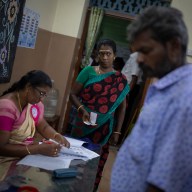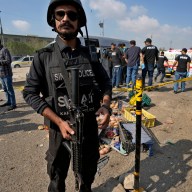It happened again — and though you may think it’s a waste of time to talk about past events, I feel strongly that it’s necessary in order to make any sense of the nightmares unfolding on university and high school campuses across Canada and the United States.
Trying to uncover the whys, to figure out which characteristics match in the various killers, to try to drum up parallels — these are some of the only ways that university officials, police and security personnel and the rest of us can hope for to stop any future attacks at our academic institutions.
We must realize that, thus far, these attacks have been random and unconnected. But that’s part of what makes them so scary. To us, there’s no meaningful link to the day, time, or location where the shooters have made their final stand. Yet, suddenly, in the middle of a random day, dozens of young innocents are cut down in their prime.
We cannot only remain helplessly on the sidelines, thankful it wasn’t our school. Because what if it was? What if an attack occurred in our city, on our campus, where we, or our children, attend?
Look at this list of the past 20 years: In December 1989, 25-year-old Marc Lepine shot 28 people, killing 14 women and himself, at the Ecole Polytechnique in Montreal. In August 1992, four people were shot dead at Concordia University in downtown Montreal by a disgruntled former associate professor. In 1999, two teenagers went on a shooting spree at Columbine High School in Colorado, killing 12 students and one teacher, wounding 23 others, and killing themselves.
In September 2006, Kimveer Gill injured 19 people, killing one other and himself at Dawson College, again in Montreal. In April 2007, 32 people were killed and 15 injured in a mass shooting at Virginia Tech University in the United States, then considered the deadliest shooting rampage in modern U.S. history.
This latest tragic shooting, in which a gunman killed five people and wounded a dozen more, took place at Northern Illinois University. The shooter was a former student, known to all his professors as a good student, but had recently stopped taking medications, which seemed to make his behaviour erratic.
These are only the ones that made international headlines. There are dozens of other school shootings with lesser impact that we don’t even hear about.
Mothers, sisters, girlfriends, cousins, aunts, grandmothers and neighbours — we need your help. We need to recognize these people who feel the need to take others with them when they’re planning to commit suicide.
We need to open our eyes wider to our youth, to listen more intently, to focus on their behavioural changes. Talk to your children, their friends, your nephews and nieces. If you have any indication that a youth whom you know seems more than just filled with teen angst — get help.
You may be saving more lives than you think.
Lisi Tesher
Lisi Tesher is a freelance writer and photographer living in Toronto with her husband and two children. She cares passionately about social injustices, children’s health and education, and diversity.
















